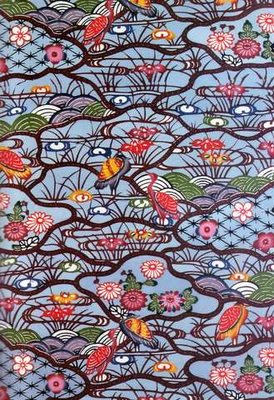
Having come through the Humanities of the 90s I have spent a great deal of my time caught in the complexity of Theory: from Faucault to Freud, from Nietzsche to Kierkegaard, from Socrates to Social Darwinism, from Keynesian Economics to Milton Friedman's Economic rationalism, and from the Italian Renaissance Neo Platonism to Post Colonial Surrealism, and so on. Like Narcissus, I have been trapped at the waters edge of Theory gazing into the lines and crevices, to see a picture of the landscape of the human mind and history, unable to pull away from the beautiful puzzle. Narcissus, it should be remembered, starved to death and there in lies the reason for the stories endurance - it is a warning.
Philosophy is intergal to the life of human society whether we aware of it or not. They are the visions in which we live. The theories of the 20th century have extended the ability to scrutinize ourselves, our past, our modes of thinking and to see the stratus of convention that make up a civilization. Analysis though does not alter the conditions of society nor do they quell the individual's internal needs and feelings. As was written above the Temple at Delphi, to
Know Thyself means not only to recognize the relative state of things but to understand ones position within the current state and the value you bring to that position. These are the most difficult for the journeyman on the path of knowledge because the answers will come only from crossing outside of theory into the path of power and responsibility (to cross from the University to the Senate as it were). These are the parts that contain the truth as it is to oneself - Narcissus must turn away from his refection to regain his body and his face so that he might live.
Theory's trap is to keep one in a state of reflection - to see the myriad of choices, but to stun the motivation to choose. This is a normal function, that is what rational thinking is for, it acts as a pause - a look before you leap. Unfortunately, once the enormous scope of choice and consideration is opened up to the mind, resolve is paused almost indefinitely as one's mind filters through every possibility for the "correct answer" to guide action. The correct answer will never come as reality in this sense is infinitely relative. But we are not only rational, and this should not be forgotten. Of equal importance are the other three Zoas; who are passion, sensation and instinct. They each play a living part in our lives and
will us to act with or without reason. Truth as it is to oneself is found here. It is only via the expressions of true feeling in ones actions that one can really
live in the world. In effect, it is to choose and to act bravely upon those choices - be them flawed or no.

If theory gives us anything it gives us the knowledge that in the world, vision competes with vision and the vision that holds influence is the one we give into. Civic duty is the participation in creating and supporting one's vision of the world, to advocate among your peers and in the everyday interaction. As human beings we are filled with visions many of them poor sketches of the brilliant bowls of human existence, we need not let them overpower us. Knowledge's gift is to bring colour, clarity and contour to vision to paint it in rich hues that enliven the spirit. Artists need not be philosophers, nor need they create art that is merely the mirror reflecting theory's face. They can feel free to create there own visions and we, the audience, may feel free to be convinced or to object. Let only that we stand proud and respect ourselves enough to speak our minds.
*******
This post has been written in response to Larry Buttrose's essay "Reality's Triumph Over the Relative" from
The Sydney Morning Herald September 16-17 2006 (not able to be linked) and to the post by Adam
"Back to Reality, Again" from the University of Sydney's Thinking Culture blog. This is a slice of my thoughts as they are when considering the nature of Theory and the Arts. A small slice.
The two images are by Hundertwasser (one of my favourite artists). The first is
Landscape with Violet Sun, Paris, 1956, mixed media, 51 x 25 cm. The second is
Irinaland Over the Balkans, Rome, November 1969, mixed media, 36.5 x 51 cm. (forgive the book spine image) These pictures are from the book
Hundertwasser.
Tags:
art, theory, philosophy, vision, narcissus, Zoas, WindBag and Thunder, Florence Forrest, artist, storyteller
 Wishing all friends of WindBagandThunder a happy and safe holiday season.
Wishing all friends of WindBagandThunder a happy and safe holiday season.















































